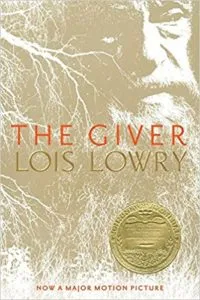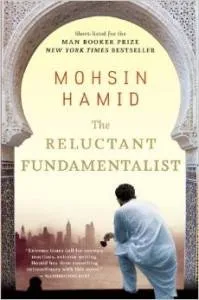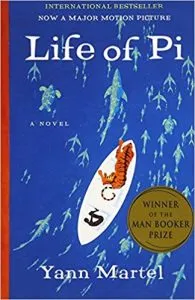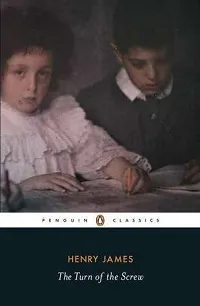
When is an Ambiguous Ending for a Novel Justified?
This post contains spoilers for The Giver, The Reluctant Fundamentalist, Life of Pi, and The Turn of the Screw. Content warning for mention of cannibalism.
Like many other Millennials, I still think about the ending of The Giver, Lois Lowry’s dystopian middle grade novel from 1993. At the end of the book, an adolescent boy named Jonas has escaped his dystopian community and saved a baby named Gabriel. Jonas may have found a family outside his community who can help them. Jonas hears music, which is forbidden in his society. “But perhaps it was only an echo,” says the last line of the novel. Depending on your interpretation, Jonas and Gabriel have either found refuge, or they freeze to death in the snow, hallucinating. People still debate the ending on social media.
An ambiguous ending like that of The Giver is like a litmus test for different interpretations. This novel shifted my thinking, providing a great introduction to open endings and the idea that novels can have multiple, contradictory interpretations. I’d previously focused on figuring out what happens in books and getting the “right” answer. School trains us to do this, but many books also leave room for readers to imagine meanings with the authors.
For me, ambiguous endings of novels are justified when they add something, instead of baffling readers or seeming unfinished. They can add complexity, make us reconsider the entire novel, and inspire analysis, fan theories, and fan fiction.
As an adult, I think the best ambiguous endings also make readers uncomfortably confront their own biases. Our childhood interpretations of The Giver depended on our expectations: whether we anticipated a happy ending and whether we’d read a dystopian novel before. In 2022 on Book Riot, I wrote about the protagonist of Mohsin Hamid’s The Reluctant Fundamentalist: “Changez confesses he felt ‘pleased’ by the 9/11 attacks, but the ambiguous ending leaves the question of whether he’s planning violence, or being unfairly profiled, unanswered.” As a reader from the U.S., I expected the author not to make his protagonist a terrorist after all. However, from the title onward, the novel asks readers to avoid both stereotypes and overcompensating for them. If readers think Changez is violent, the novel makes sure they own that through textual evidence, and not assume it because of prejudice.
Fiction is always subjective, but ambiguous endings are particularly subjective and divisive. Though I tend to like them, there are many that don’t work for me. I understand why some readers usually hate them. In 2012, Imogen Russell Williams blogged at The Guardian that she finds strong conclusions cathartic and ambiguous endings hard to detach from. Lee Rourke expressed the opposite opinion: ambiguous endings are more realistic, complex, and thought-provoking.
Some readers feel frustrated by ambiguous endings, thinking they make the rest of the book no longer worth their time. Rarely, I dislike an ambiguous ending because it seemingly negates the entire book. My creative writing mentor in college said he dislikes revelations that an entire story is a dream or illusion. This is a personal pet peeve, but one I often agree with. Some endings eliminate or reverse the message of the earlier story. The interpretation that a story was a dream lowers its stakes to almost nothing. I like ambiguity and twists, but not if they feel like bait-and-switch.
Life of Pi was marketed as an uplifting, magical novel, and ads for its movie and stage adaptations echoed this. In the final chapters, though, this fabulist story of a boy shipwrecked with zoo animals becomes a horror story about murder and cannibalism. When investigators interview him, the protagonist asks them and readers which story they believe. The novel’s themes include the power of storytelling, belief, and choice. Even the possibility of the horror story interpretation renders the rest of the book idealized, ringing false in contrast. At least, this was my opinion reading it at age 15 in 2004. It was a bestseller, so many people disagreed with me.
Reactions to ambiguous endings are often polarized, and like everything in the arts, they’re influenced by culture in general. In 2021, fellow Book Rioter Patricia Thang wrote that western reviewers criticized her favorite books and movies with comments like, “Nothing happened.” She realized all these pieces of fiction used the East Asian storytelling structure of kishōtenketsu, which is often more open-ended than the western, three-act structure.
The Turn of the Screw has been imitated and parodied so many times, it’s easy to forget how creepy and original it is. Like most other fiction from the Victorian era, its language seems dense and ambiguous to many modern readers. It uses ambiguity to great effect throughout. Early literary critics of the horror novella debated whether its ghosts were real or perhaps the governess’s hallucinations. By the 1970s and ‘80s, structuralist critics embraced the ambiguity as central to the text.
Ambiguous endings are polarizing, but when done well, they add layers of possible interpretations to fiction and force us to confront our implicit and cultural biases. Some readers find ambiguous endings unsatisfying. In contrast, I usually find them more reflective of the complexities of real life.
They’re also big creative risks. It requires narrative control and confidence in oneself and one’s readers to leave a story ambiguous, resisting the urge to tie up all loose ends. I think the best ambiguous endings challenge readers and allow for multiple, equally plausible interpretations. When one possibility seems highly unlikely, or makes the rest of the story seem meaningless, I find an ambiguous ending less successful and more contrived.
If you love ambiguity in fiction, you may be interested to read why Book Rioter Danika Ellis thinks “Books Don’t Have to Explain Themselves to You.”













